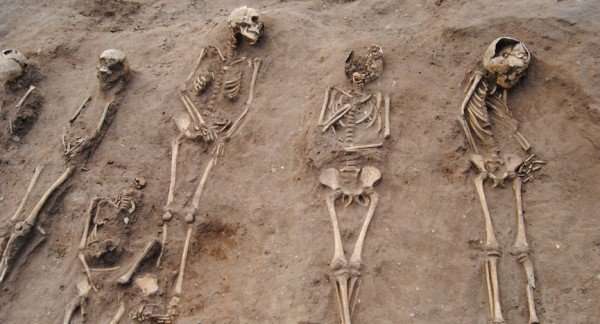Prague School, late 16th Century
The centaur Nessus, pierced by Hercules' arrow, carrying Deianira across the river Evenus
traces of black chalk, bodycolor heightened with gold on vellum
Image carried away from Christies
In astrological circles, I feel that the Centaur asteroid Nessus is too easily pigeon-holed as "The Abuser's Asteroid". The mythology is foreshore black-and-white cut-and-dried and a slam-dunk: Nessus is a Bad,
Bad, Horsey.
One thing I have learned to appreciate with ye olde mythologies - and to delve deeply for - are their subtle nuances; which you don't get if you are content with being spoon-fed other people's interpretations. I always encourage students of astrology to hit up the source material themselves and not accept willy-nilly whatever bastard blend of myth/astrology is being served up. I was a student of Joe Campbell's long before I trip-trapped my way across the bridge to the cookbooks of astrology. Methinks we are overdue for a bonfire of the vanities!
Carl Jung, that pioneer of the transpersonal, wrote:
The archetypes themselves are forms, without content of their own, that serve to organize or channel psychological material. They are somewhat like dry stream beds whose shape determines the characteristics of a river once water begins flowing through them. The archetypes are carriers of energy. When an archetype is activated, it generally unlocks a tremendous amount of energy. All creativity has an archetypal element.
It is vitally important that students of asteroidal astrology do their own legwork, for sometimes that dry stream bed can turn into an abyss the size of the Grand Canyon. And then you're stuffed because only
mules can get down the canyon and you could be cooling your heels for sometime before a dude riding an ass turns up.
Envy and self-sabotage. That's a pretty heavy load to carry through life and humans learn from early childhood to want what they can't have and to take from others what they want. Or to give
that a good try until they are standing before a Magistrate for petty theft. Nessus is kind of a 'troubled teen' energy and the whole juvenile delinquent thing was a contrived concept developed in the 1940s.
Nessus is everywhere and cantering through Aquarius. Don't believe me? Don't take my word for it either.
The next time you go to the supermarket, find a mother pushing a shopping trolley with a toddler sitting in it, who is red-in-the-face and screaming blue-murder because its desire has been thwarted. You tell me that product placements aren't designed to evoke envy in the poor of those with money to burn, or to self-sabotage those who are on diets or restricted by health reasons in what they can eat.
Do not be fooled: this is not
greed. That is too simple a ratiocination.
O yes indeedy, it is a brave New World shoppers!
New World Supermarket, Waikanae, New Zealand
What To Do When Things Get Nasty
by Annemarie Cross
Tall poppy syndrome is well and truly alive.
For those of you who may not be familiar with this saying, Wikipedia describes the tall poppy syndrome as: “a social phenomenon in which people of genuine merit are resented, attacked, cut down, or criticised because their talents or achievements elevate them above or distinguish them from their peers”.
As you continue to grow your business and increase your credibility and reputation within your field, not only will you capture the attention of your potential prospect/clients – you’ll also be noticed by your competitors and other people in your circle.
And, unfortunately, some of these people may not always have your best interests at heart. In fact, you may find that they try to hinder your progress through a direct attack on you personally and your work, or they’ll try to drag you down with their critical (naysayer) comments and/or actions.
I’m not talking about constructive criticism where someone is trying to offer you advice with good intentions because they want to see you grow and prosper.
I’m referring to the vindictive comments that are coming from a place of ‘do or die competitiveness’ or out of spite and envy with the sole intent on tarnishing your credibility or keeping you down.
read more
I currently have Black Moon Lilith piggy-back transit conjunct natal Nessus. What can I say? Hi-Ho silver and lock me away........I'm channeling the Queen of Mean. In combination with a Hades Moon in Capricorn....tee hee.... I'm loaded for bear. My appointment this coming Tuesday morning with Social Security may yield a spiritually advantageous moment to deliver a kick in the astral.
Further Reading
Envy and Self-Sabotage - Joseph Burgo Ph.D.
Basic Shame, Toxic Shame - Joseph Burgo Ph.D.
It is the awareness of being damaged, often an unconscious awareness, that I refer to as
basic shame. It is intrinsic and internal, though we may confuse it with the outside world: those of us who are troubled by basic shame dread being seen and usually fear that others will look down upon us. We feel as if we are “ugly” or “deformed”. We may be burdened by a feeling of self-hatred throughout our lives.
Defenses Against Shame - Joseph Burgo Ph.D.
Narcissism is the primary defense against shame and often goes hand-in-hand with the other two defenses. When people suffer from an unbearable sense of shame, they often seek to elicit admiration
from the outside, as if to deny the
internal damage. Beautiful outside versus ugly inside. We’ve all known such narcissistic types.
The Gift of Seven Extraordinary Days of Grace - Caroline Myss
Grace comes in many expressions. It intervenes in raging arguments, calming your anger so that you do not say what you can never take back. Grace whispers thoughts of hope in desperate times, giving you the stamina to hold on through the storms of life. And grace delivers inspiration, awakening creative resources deep within your being. The power of grace is endless, silent, and powerful.





/arc-anglerfish-syd-prod-nzme.s3.amazonaws.com/public/WDQXLSCZAZGJTHLQ5FVRRUK4FE.jpg)
/arc-anglerfish-syd-prod-nzme.s3.amazonaws.com/public/NDYAICNHGVEBLB5WB2EASXFPCI.jpg)